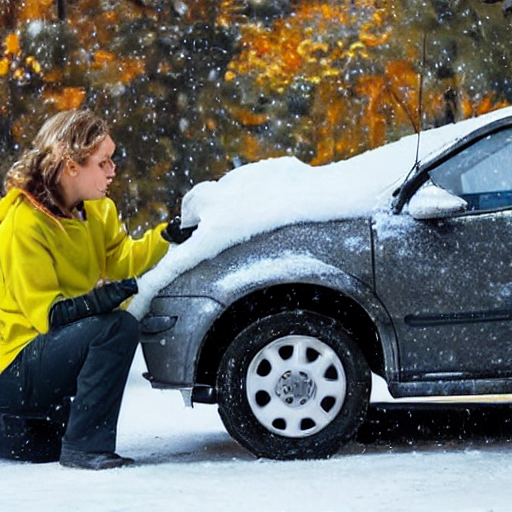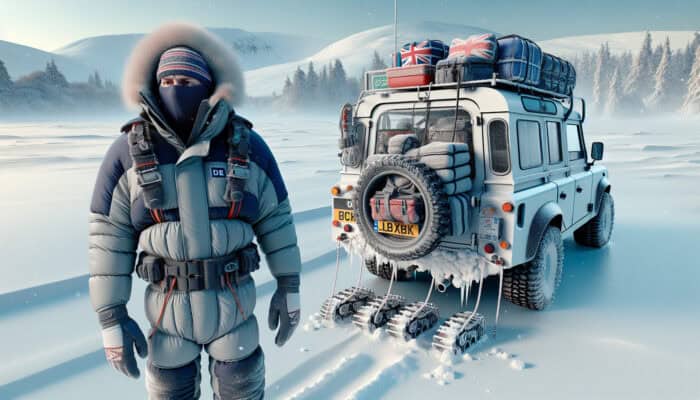Maximize Your Winter Safety: Essential Steps for Preparing Your Vehicle for Icy Conditions
As the winter months transform our environment into stunning snowy landscapes, they also present unique challenges, particularly for those who drive. The beauty of the season can quickly turn into a nightmare when faced with icy roads and unexpected emergencies. To ensure your safety and confidence while driving in winter conditions, it is crucial to take proactive measures to prepare your vehicle. Envision being stuck on a desolate road during a winter storm, cut off from assistance—that thought alone can be chilling. This detailed guide will provide you with the necessary steps to equip your vehicle for any winter crisis, ensuring peace of mind and secure travels throughout the chilly season.

Prioritize Your Safety: Thoroughly Remove Snow and Ice from Your Vehicle
Before you set out on your winter journey, it is vital to remove all snow and ice from your vehicle. Although it may seem like a simple task, many drivers neglect this crucial step, which can lead to dangerous situations. Snow accumulation on the roof, hood, or windows can severely obstruct your visibility, creating hazardous driving conditions. In some instances, snow may slide down onto your windshield while you’re driving, resulting in a sudden and alarming loss of visibility. Furthermore, large chunks of ice or snow can become dangerous projectiles, posing risks to other road users. Equip yourself with a sturdy scraper and brush, and take the time to meticulously clear your vehicle of all snow and ice. This proactive measure not only enhances your safety but also contributes to the safety of others on the road during winter driving.
Boost Traction and Control: Conduct a Comprehensive Tire Inspection
Your tires serve as the sole connection between your vehicle and the road, making their condition critically important for grip and safety during winter driving. Prior to the onset of cold weather, it is essential to evaluate their condition, ensuring they are properly inflated and in optimal shape. Cold temperatures can cause tire pressure to drop, which significantly reduces traction on icy or snowy surfaces. Always refer to your vehicle’s manufacturer-recommended tire pressure levels, typically located in your vehicle’s manual or on a sticker on the driver’s side door jamb.
Moreover, the tread depth of your tires is essential for maintaining good performance on slick surfaces. While the legal minimum tread depth may be 2/32 of an inch, opting for tires with a deeper tread can significantly improve grip and handling. Consider investing in winter or snow tires that are specifically engineered for low-temperature conditions to ensure maximum traction and handling. Remember, well-maintained tires can be the crucial factor that keeps you securely on the road, helping you avoid potentially dangerous situations during winter travel.
Ensure Battery Reliability: Prepare for Cold Weather Starts
Imagine being all set for a winter adventure, only to discover that your vehicle won’t start because of a failing battery. To prevent this frustrating scenario, it’s important to assess your battery’s condition before the temperatures drop. Numerous auto parts retailers offer complimentary battery inspections, and taking advantage of this service can help confirm that your battery is in excellent condition.
Winter weather can place additional stress on your battery, making it critical to keep the terminals clean and free from corrosion. Look for signs of wear or aging, and verify that all connections are secure. If your battery shows indications of nearing the end of its lifespan, it is wise to replace it preemptively to avoid being stranded in the cold due to a dead battery. Maintaining your battery in prime condition is vital for reliable winter driving.
Optimal Fluid Levels: Ensure Essential Fluids are Maintained for Peak Performance
Maintaining appropriate levels of essential fluids in your vehicle is crucial for optimal performance during winter driving. Start by checking your engine coolant, commonly referred to as antifreeze, which is designed to prevent your engine from freezing. It is imperative to ensure this fluid is at the recommended levels for efficient operation. If you are unsure about the correct levels, consult your vehicle manual or seek assistance from a qualified professional.
Additionally, inspect your windscreen washer fluid, as winter roads can quickly turn slushy and dirty, obscuring your view. Refill your washer fluid with a winter blend that remains effective even in freezing temperatures. Don’t overlook checking your brake fluid and engine oil; ensuring these fluids are at the proper levels is essential, as cold weather can adversely affect their performance. Properly maintained fluids are vital for your vehicle's smooth operation and overall safety, especially during the winter months.
Be Prepared for Any Situation: Assemble Your Comprehensive Winter Emergency Kit
In the event of a winter emergency, having a well-stocked emergency kit in your vehicle acts as a reliable safety net. Make sure your kit includes essential items such as a dependable flashlight, extra batteries, jumper cables, a reflective vest, a warm blanket, gloves, and a hat. Additionally, include a first aid kit, non-perishable snacks, and water as critical supplies to have on hand. You might also consider incorporating a portable phone charger, a compact shovel, and materials like sand or kitty litter to improve traction if you become stuck.
Always remember that being prepared for the unexpected is vital for safely navigating winter conditions. Regularly check and replenish your emergency kit to ensure you are equipped to handle any situation that may arise. Taking these proactive steps can significantly enhance your safety during winter travel, allowing you to appreciate the beauty of the season without unnecessary worry.
Maximize Your Safety: Verify the Functionality of Your Vehicle Lights
With shorter days and longer nights during the winter months, ensuring that all your vehicle’s lights are functioning properly is crucial for safety. Take the time to inspect all external lights, including turn signals, brake lights, headlights, and taillights. Replace any burnt-out or dim bulbs to maintain optimal visibility for both yourself and other drivers on the road. Proper lighting not only improves your visibility while driving but also ensures that you are easily seen by other drivers, thereby reducing the risk of accidents during critical moments.
Wiper Blades: Ensure Clear Visibility in Harsh Winter Conditions
Winter weather often brings snow, freezing rain, and slushy road conditions that can severely impair visibility. To combat these challenges, it is vital to ensure your wiper blades are in excellent working condition. If your current wipers are leaving streaks or failing to effectively clear moisture, it’s time for a replacement. Consider investing in winter-specific wiper blades designed to handle severe weather, as they can significantly enhance your visibility during snowstorms and freezing rain, allowing you to navigate safely through challenging conditions.
Stay Informed: Regularly Monitor Weather and Road Conditions for Safe Travel
To effectively navigate the challenges of winter driving, staying informed about weather conditions and potential road closures is essential. Before embarking on any journey, check the weather forecast and stay alert to possible hazards along your route. Utilizing weather apps, tuning into local news stations, or listening to radio announcements can provide you with real-time updates on changing conditions.
Furthermore, it’s wise to inform someone of your travel plans, including your intended route and estimated arrival time. This ensures that should any emergencies arise, someone will know where to look for you. By following these simple yet effective strategies, you can be well-prepared for any winter emergency, ensuring a safe journey. Remember, it’s always better to be over-prepared than caught off guard. Embrace the beauty of winter while ensuring your vehicle is equipped to handle whatever challenges lie ahead. Safe travels!
The post Preparing Your Vehicle: Stay Ahead of Winter Challenges appeared first on Survival Bite.
The Article Preparing Your Vehicle for Winter Challenges Ahead Was Found On https://limitsofstrategy.com
The Article Winter Vehicle Preparation for Upcoming Challenges First Appeared ON
: https://ad4sc.com












Emory Wesolowski
Your emphasis on thorough snow and ice removal resonates deeply with me. I remember a particularly icy winter a few years ago when I neglected this step in a rush to get somewhere. It resulted in a frustrating and somewhat dangerous drive, especially when my visibility was compromised. The way we prepare our vehicles can truly set the tone for our winter experiences.